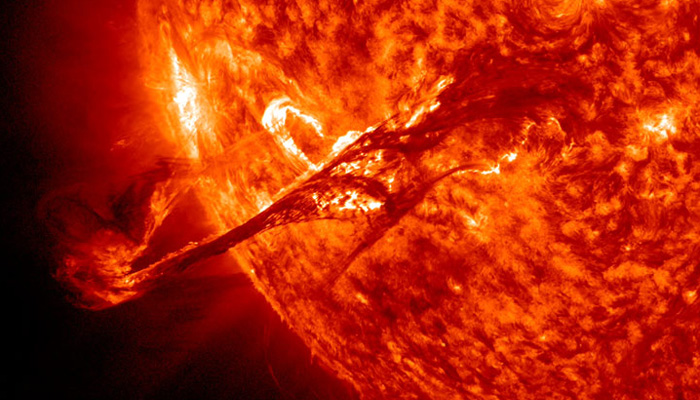Solar flare alert: Sun to shoot fireballs at Earth. How dangerous are they?
X-class flares are the largest bursts in the solar system and are able to create lasting storms of radiation
July 17, 2023

Russian scientists have warned of a spate of tumultuous disturbances on the 10,000-degrees Fahrenheit hot surface of the Sun, resulting in ginormous solar flares that might whip the Earth on Monday, disrupting satellite communications on a massive scale.
According to the experts, three solar flares were observed Sunday with the Fedorov Institute of Applied Geophysics in Moscow saying: "Class X flares are possible, including proton flares, and short-wave radio conditions were expected to deteriorate."
X-class flares are the largest bursts in the solar system and can create lasting storms of radiation. Proton flares are a storm of solar energetic particles, composed chiefly of protons.
Solar flares happen when the powerful magnetic fields in and around the Sun reconnect. They can affect Earth's magnetic field with the potential to damage satellites and communications equipment, according to Nasa.
In 2022, a geomagnetic storm triggered by a large burst of radiation from the sun knocked out 40 then newly launched Elon Musk's SpaceX satellites.
Three solar flares were observed Sunday, the Fedorov Institute said, with one lasting 14 minutes, accompanied by a disruption in radio communication.
Earlier this month, National Oceanic and Atmospheric Administration's (NOAA) Space Weather Prediction Center stated that a "strong radio blackout" occurred in some parts of the US recently.
“The flare came from a large and complex region denoted as sunspot group 3354,” NOAA said, adding that it led to a "temporary degradation or complete loss of High Frequency (HF) radio signals on some of the sunlit sides of Earth."
The giant sunspot, AR3354, was first spotted on June 27 and increased rapidly within two days to a size about 10 times larger than Earth, raising concerns among space weather scientists, according to the Independent.
Nasa stated: "Sunspots are areas that appear dark on the surface of the Sun. They appear dark because they are cooler than other parts of the Sun's surface."
"The magnetic field lines near sunspots cause explosions as they reorganise, causing solar flares. It releases a lot of radiation into space. The intense intense explosion, releases radiation that can interfere with our radio communications here on Earth," said Nasa.
Apart from this, another concern is solar storm events in which huge amounts of coronal mass ejection (CME) take place, travelling from space to hit the Earth's magnetic field.
Their effects could spark geomagnetic storms. As a result, the satellites, communication, internet connectivity, and GPS could be disrupted or damaged. It could also cause power grid failures.









